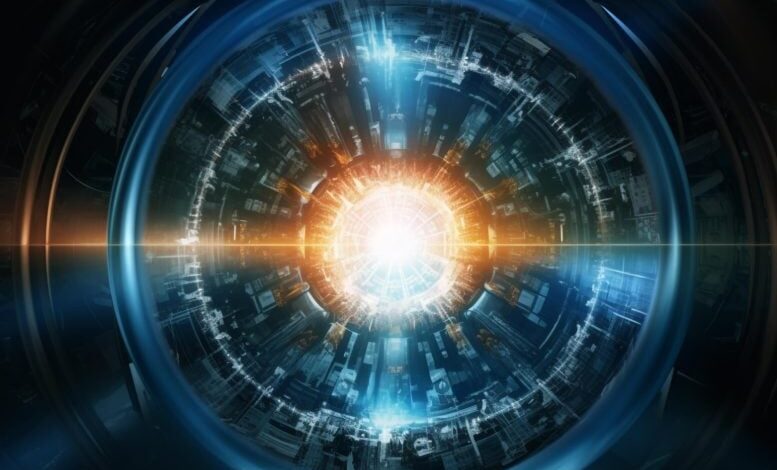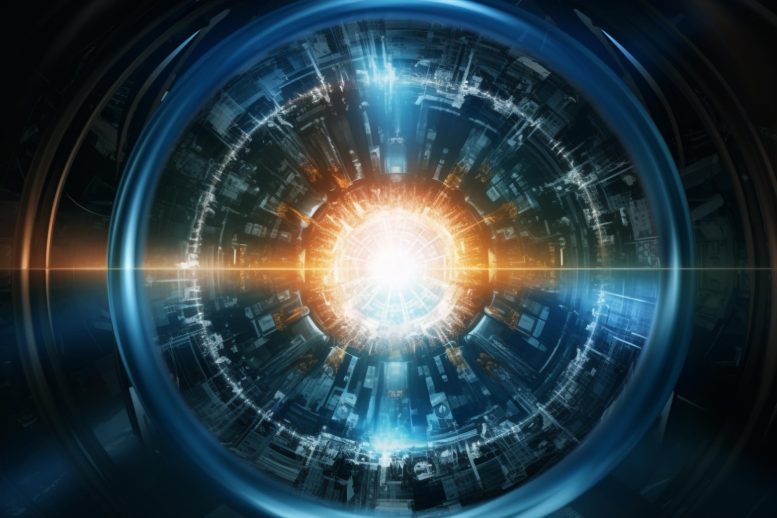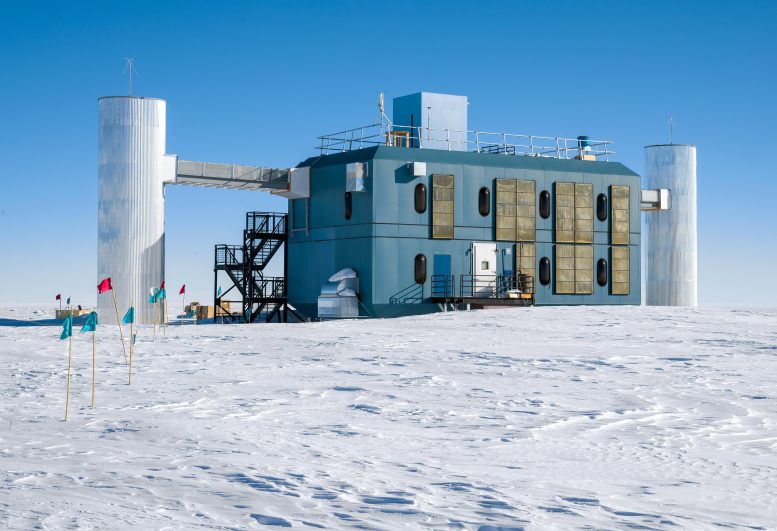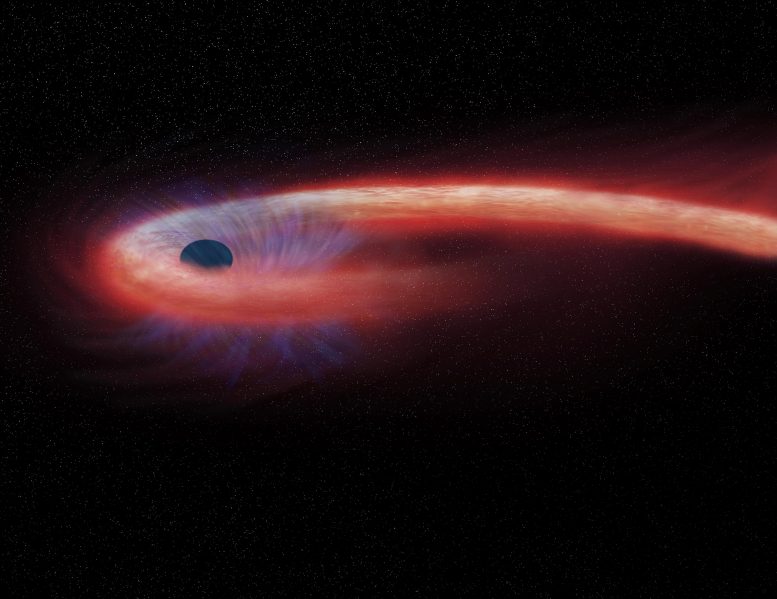How IceCube’s Neutrino Hunt Is Rewriting Astrophysics


Recent discoveries at the IceCube Observatory confirm the detection of high-energy tau neutrinos, shedding light on neutrino flavor oscillation and the cosmic origins of these particles. Credit: SciTechDaily.com
IceCube Neutrino Observatory’s recent detection of high-energy tau neutrinos, previously only hinted at, marks a significant advance in understanding astrophysical neutrinos.
These findings from a decade of data support the idea that neutrinos oscillate across vast distances and energies, potentially unveiling the origins of neutrinos from cosmic sources like black holes.
IceCube Detects a Rare Type of Energetic Neutrino Sent From Powerful Astronomical Objects
About a trillion tiny particles called neutrinos pass through you every second. Created during the Big Bang, these “relic” neutrinos exist throughout the entire universe, but they can’t harm you. In fact, only one of them is likely to lightly tap an atom in your body in your entire lifetime.
Most neutrinos produced by objects such as black holes have much more energy than the relic neutrinos floating through space. While much rarer, these energetic neutrinos are more likely to crash into something and create a signal that physicists like me can detect. But to detect them, neutrino physicists have had to build very large experiments.
IceCube, one such experiment, documented an especially rare type of particularly energetic astrophysical neutrino in a study published in April 2024. These energetic neutrinos often masquerade as other, more common types of neutrino. But for the first time, my colleagues and I managed to detect them, pulling out a few from almost 10 years of data.
Their presence puts researchers like me one step closer to unraveling the mystery of how highly energetic particles like astrophysical neutrinos are produced in the first place.

IceCube sits on tons of clear ice, allowing scientists to make out neutrino interactions. Credit: Christopher Michel
IceCube Observatory
The IceCube Neutrino Observatory is the 800-pound gorilla of large neutrino experiments. It has about 5,000 sensors that have peered intently at a gigaton of ice under the South Pole for over a decade. When a neutrino collides with an atom in the ice, it produces a ball of light that the sensors record.
When neutrinos move through IceCube, a tiny fraction of them will interact with atoms in the ice and produce light, which the sensors record. In the video, the spheres represent individual sensors, with the size of each sphere proportional to how much light it detects. The colors indicate the light’s relative arrival time, according to the colors of the rainbow, with red arriving earliest and violet latest.
IceCube has detected neutrinos created in several places, such as the Earth’s atmosphere, the center of the Milky Way galaxy, and black holes in other galaxies many light-years away.
But the tau neutrino, one type of particularly energetic neutrino, has eluded IceCube – until now.
Neutrino Flavors and Their Detection
Neutrinos come in three different types, which physicists call flavors. Each flavor leaves a distinct imprint on a detector like IceCube.
When a neutrino bangs into another particle, it usually produces a charged particle that corresponds with its flavor. A muon neutrino produces a muon, an electron neutrino produces an electron, and a tau neutrino produces a tau.
Neutrinos with a muon flavor have the most distinctive signature, so my colleagues and I in the IceCube collaboration naturally searched for those first. The muon emitted from a muon neutrino collision will travel through hundreds of meters of ice, making a long track of detectable light, before it decays. This track allows researchers to trace the neutrino’s origin.
The team next looked at electron neutrinos, whose interactions produce a roughly spherical ball of light. The electron produced by an electron neutrino collision never decays, and it bangs into every particle in the ice it comes near. This interaction leaves an expanding ball of light in its wake before the electron finally comes to rest.
Since the electron neutrino’s direction is very hard to discern by eye, IceCube physicists applied machine learning techniques to point back to where the electron neutrinos might have been created. These techniques employ sophisticated computational resources and tune millions of parameters to separate neutrino signals from all known backgrounds.
The third flavor of neutrino, the tau neutrino, is the chameleon of the trio. One tau neutrino can appear as a track of light, while the next can appear as a ball. The tau particle created in the collision travels for a tiny fraction of a second before it decays, and when it does decay it usually produces a ball of light.
Those tau neutrinos create two balls of light, one where they initially bang into something and create a tau, and one where the tau itself decays. Most of the time, the tau particle decays after traveling only a very short distance, making the two balls of light overlap so much that they are indistinguishable from a single ball.
But at higher energies, the emitted tau particle can travel tens of meters, resulting in two balls of light separate from one another. Physicists armed with those machine learning techniques can see through this to find the needle in the haystack.
Energetic Tau Neutrinos
With these computational tools, the team managed to extract seven strong candidate tau neutrinos from about 10 years of data. These taus had higher energies than even the most powerful particle accelerators on Earth, which means they must be from astrophysical sources, such as black holes.
This data confirms IceCube’s earlier discovery of astrophysical neutrinos, and they confirm a hint that IceCube previously picked up of astrophysical tau neutrinos.
These results also suggest that even at the highest energies and over vast distances, neutrinos behave in much the same way as they do at lower energies.
In particular, the detection of astrophysical tau neutrinos confirms that energetic neutrinos from distant sources change flavor, or oscillate. Neutrinos at much lower energies traveling much shorter distances also oscillate in the same way.

Black holes, like the one in this illustration, can emit energetic neutrinos. Credit: NASA / CXC / M. Weiss
As IceCube and other neutrino experiments gather more data, and scientists get better at distinguishing the three neutrino flavors, researchers will eventually be able to guess how neutrinos that come from black holes are produced. We also want to find out whether the space between Earth and these distant astrophysical neutrino accelerators treats particles differently depending on their mass.
There will always be fewer energetic tau neutrinos and their muon and electron cousins compared with the more common neutrinos that come from the Big Bang. But there are enough out there to help scientists like me search for the most powerful neutrino emitters in the universe and study the limitless space in between.
Written by Doug Cowen, Professor of Physics and Professor of Astronomy and Astrophysics, Penn State.
Adapted from an article originally published in The Conversation.
